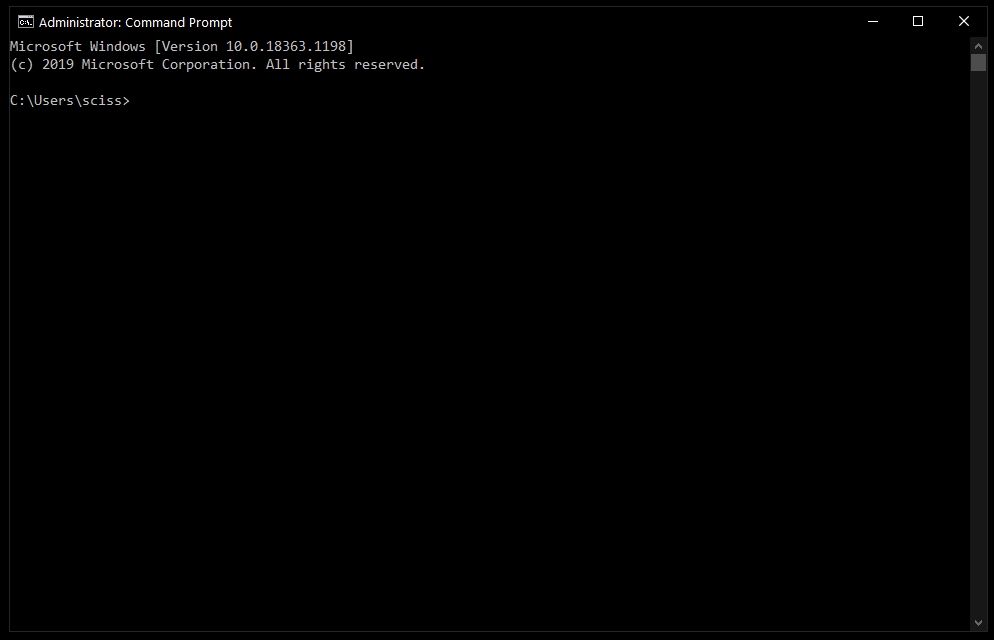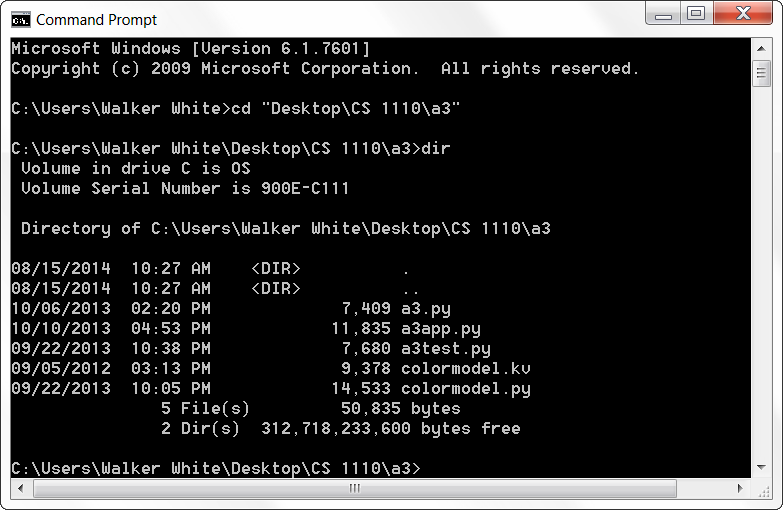

- #All command prompt commands drivers#
- #All command prompt commands Pc#
- #All command prompt commands free#
Before the first restart the user was asked whether to enable EMS Memory, since use of expanded memory required a reserved 64KiB region in upper memory. The whole process required two system restarts.
#All command prompt commands drivers#
This was usually done by moving TSR programs and device drivers to the upper memory.
#All command prompt commands free#
Starting with version 6, MS-DOS included the external program MemMaker which was used to free system memory (especially Conventional memory) by automatically reconfiguring the AUTOEXEC.BAT and CONFIG.SYS files. The command is available in MS-DOS versions 4 and later. It is capable of displaying program size and status, memory in use, and internal drivers. The command is available in MS-DOS versions 2 and later. The parent of the directory specified will be created if it does not already exist. įrom DOS 3.0 through 3.21, there are instead per-country commands, namely KEYBFR, KEYBGR, KEYBIT, KEYBSP and KEYBUK. The command is available in MS-DOS versions 3.3 and later. The KEYB command is used to select a keyboard layout. It is available separately for versions 6.2 and later on the Supplemental Disk.

:max_bytes(150000):strip_icc()/windows-7-cmd-commands-5814df755f9b581c0baede29-94af281c8d1f455f9eee80d9e8d3fef8.jpg)
The command is available in MS-DOS versions 3 through 5. The opposite can be achieved via the SUBST command. The JOIN command attaches a drive letter to a specified directory on another drive.

DR-DOS' filelink is executed on both the client and server. The server-side version of InterLnk, it also immobilizes the machine it's running on as it is an active app (As opposed to a TSR app) which must be running for any transfer to take place. Network PCs using a null modem cable or LapLink cable. Otherwise, it skips the remainder of the line and continues with next command line. It evaluates the specified condition, and only if it is true, then it executes the remainder of the command line. IF is a conditional statement, that allows branching of the program execution. The command is available in MS-DOS versions 3.2 and later. The APPEND command is similar to the PATH command that tells DOS where to search for program files (files with a. Sets the path to be searched for data files or displays the current search path.
#All command prompt commands Pc#
Many commands are the same across many DOS systems, but some differ in command syntax or name.Ī partial list of the most common commands for MS-DOS and IBM PC DOS follows below. The command interpreter preserves the case of whatever parameters are passed to commands, but the command names themselves and file names are case-insensitive. Spaces and symbols such as a "/" or a "-" may be used to allow the command processor to parse the command line into filenames, file specifications, and other options. Additionally, command line switches, or other parameter strings, can be supplied on the command line. Commands that can accept only a single file name are said to accept a filename parameter. In the list below, commands that can accept more than one file name, or a filename including wildcards (* and ?), are said to accept a filespec (file specification) parameter. Copies of these utility command programs had to be on an accessible disk, either on the current drive or on the command path set in the command interpreter. Such utility programs would be stored on disk and loaded just like regular application programs but were distributed with the operating system. If no match is found, an error message is printed, and the command prompt is refreshed.Įxternal commands were too large to keep in the command processor, or were less frequently used. When the user types a line of text at the operating system command prompt, COMMAND.COM will parse the line and attempt to match a command name to a built-in command or to the name of an executable program file or batch file on disk. Some commands are internal-built into COMMAND.COM others are external commands stored on disk. When an application exits, if the transient portion of the command interpreter in memory was overwritten, DOS will reload it from disk. The command interpreter for DOS runs when no application programs are running.


 0 kommentar(er)
0 kommentar(er)
